Ginkgo biloba
There is more than meets the eye to the Ginkgo biloba, a well-known and widely cultivated plant. Ginkgo biloba is one of the toughest species on the planet. Did you know that six ginkgo trees survived the 1945 Hiroshima atom bomb?
The trees were among the few plant and animal survivors in the area and they are still alive today. This example is a testament to its resilience. Ginkgo biloba is well-suited to an urban environment because of its ability to endure pollution and cramped soil space. Disease and insects seldom affect this robust plant, consequently, the longevity of this tree is impressive; some specimens are claimed to be over 1,500 years old.
If that is not impressive enough, medicinally, ginkgos can be used to remedy a range of conditions. According to the Mayo Clinic, evidence supports ginkgos as beneficial for managing dementia, anxiety, schizophrenia, and cerebral insufficiency (insufficient blood flow to the brain).
There may be additional medicinal benefits, but further research is needed. However, ginkgo supplements should be used with caution in people with blood circulation disorders or if taken with aspirin or other herbs that increase bleeding (e.g. garlic, ginger) as they may produce unwanted side effects.
In addition to the medicinal benefits, the nuts from Ginkgo biloba are edible and are used in traditional Chinese cuisine. Have you ever eaten Buddha’s delight? This Chinese vegetarian dish features the nut-like gametophytes inside the seeds from Ginkgo biloba and is often served during Chinese New Year celebrations. The nuts from Ginkgo biloba are also used in congee and in dishes made for special occasions.
On top of all the amazing benefits of Ginkgo biloba, it is also a gorgeous tree. Come back to Scott Arboretum in autumn and you can look forward to the vibrant yellow foliage of this deciduous tree that sheds its leaves rapidly – within a one day to two week span.
Ginkgos have a unique leaf shape and it is no surprise that the symbol of Tokyo is a ginkgo leaf. Ginkgo biloba is known as the maidenhair tree because the leaves appear similar to some of the pinnae of the maidenhair fern. Other common names are Kew tree and Japanese silver apricot.
One interesting characteristic of Ginkgo biloba is that it is a dioecious tree which means that there are male and female trees. Male plants produce small pollen cones. A wonderful place to admire a unique male cultivar is the decorative Gingko biloba ‘Saratoga’ espalier display on the back wall of Parrish Hall facing Kohlberg Hall.
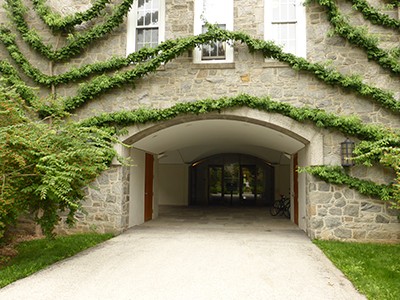
Ginkgo biloba ‘Saratoga’ espalier displayed on the back wall of Parrish Hall facing Kohlberg Hall. photo credit: L. Lancaster
There are also two young round-shaped ‘Golden Globe’ male cultivars on campus, both accessioned in 2004. One is located in front of Clothier Hall and the other is located between the Bell Tower and Sharples Dining Hall. A disadvantage of male trees is that they are highly allergenic compared to females.
Female plants produce a light yellow-brown fruit. Although the fruit is lovely, many horticulturists prefer a male plant because the fruit contains butyric acid and leaves a nasty odor.
There are several female Ginkgo bilobas on campus, so you can experience this phenomenon yourself in the fall. Check them out at the corner of the West House or the corner of Parrish adjacent to the Dean Bond Rose Garden.
Along the side of Parrish Hall facing Parrish West Circle you can see a female cultivar, ‘Tubiformis’, where the leaves appear to be rolled into tubes. The fruit odor from the females is probably the only downside, so don’t be afraid to come and experience the splendor of the ginkgo collection at Scott Arboretum of Swarthmore College.





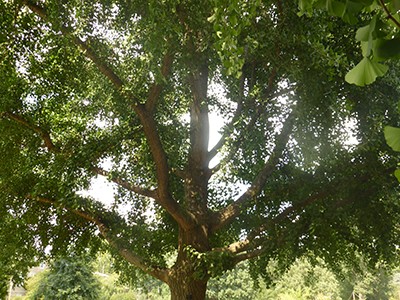
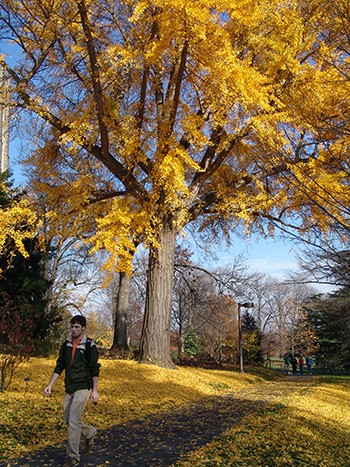
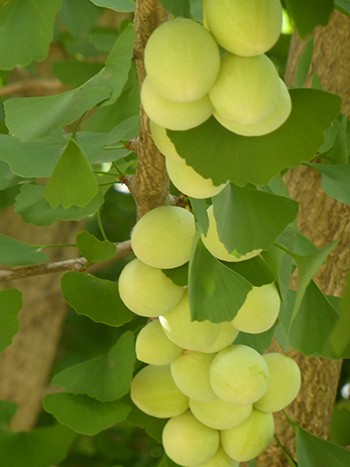
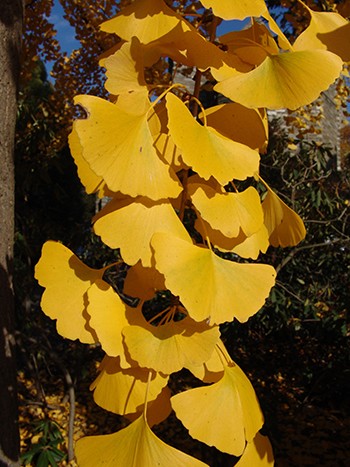
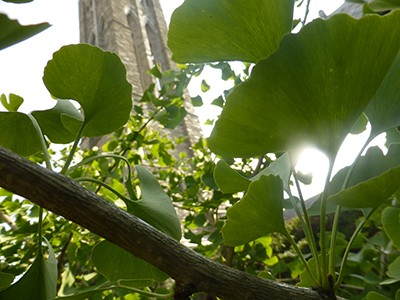
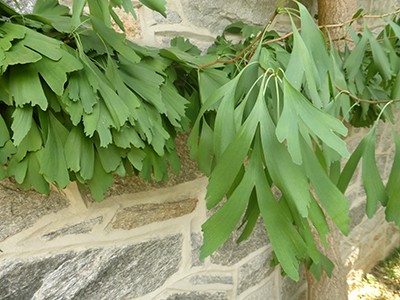
Mary
Posted at 16:42h, 31 AugustI have heard that the Ginkgo survived as a species because monks in Asia cultivated it, and that had they not, it would have become extinct. Since you make a good case for the robust nature of the tree, that leaves me wondering why the Ginkgo was ever endangered. Has anyone ever looked into this? Thanks, Mary
David
Posted at 13:56h, 13 MarchHi Mary,
You will find the answer to your question at :-
http://kwanten.home.xs4all.nl
Hope this helps,
David